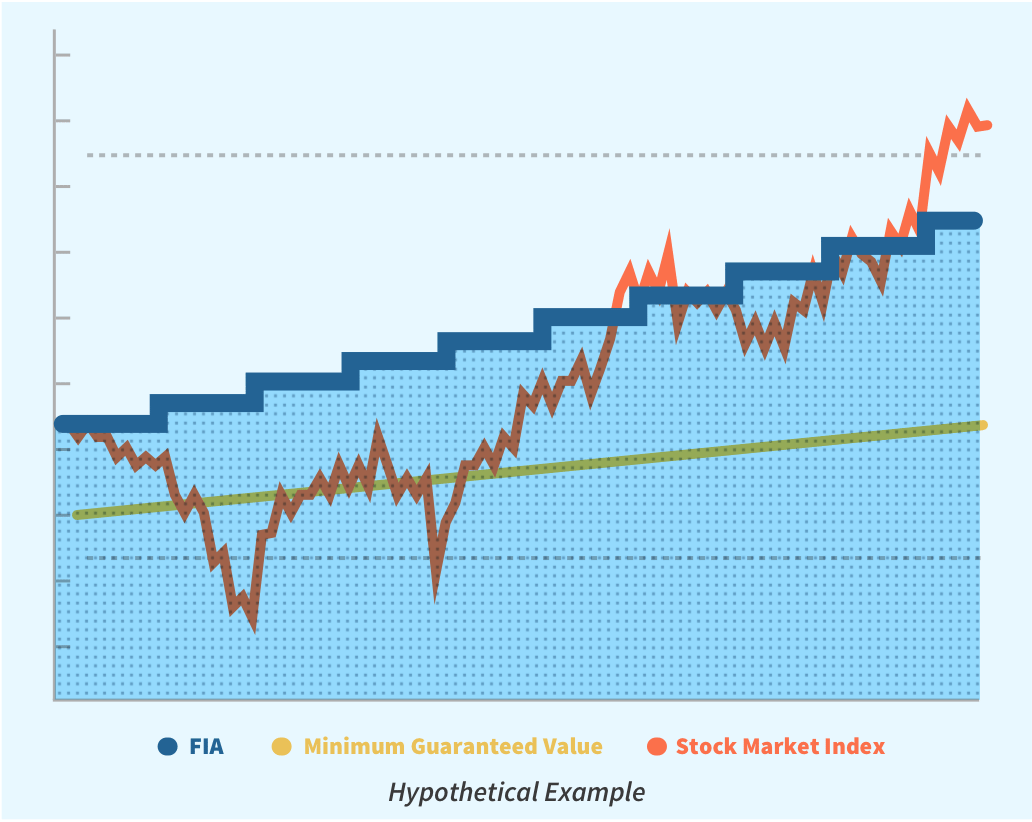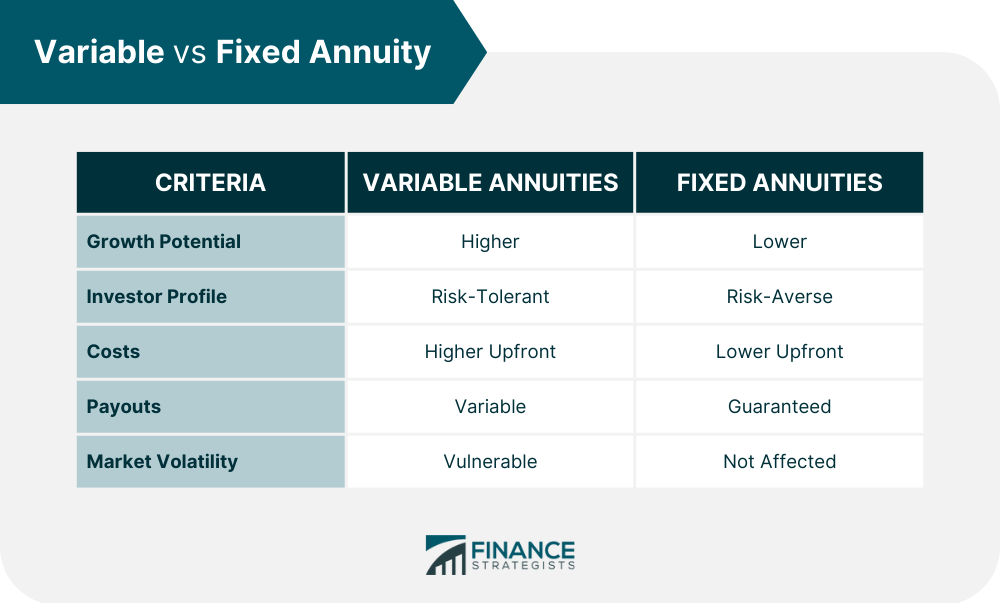Featured
Table of Contents
Equally as with a dealt with annuity, the proprietor of a variable annuity pays an insurer a round figure or collection of payments in exchange for the assurance of a series of future payments in return. But as stated over, while a taken care of annuity expands at a guaranteed, consistent price, a variable annuity grows at a variable rate that depends upon the efficiency of the underlying financial investments, called sub-accounts.

During the build-up phase, assets purchased variable annuity sub-accounts expand on a tax-deferred basis and are tired only when the agreement proprietor withdraws those profits from the account. After the accumulation stage comes the earnings phase. In time, variable annuity properties ought to in theory raise in value until the agreement owner decides he or she would love to start withdrawing cash from the account.
The most substantial issue that variable annuities usually present is high price. Variable annuities have a number of layers of charges and expenses that can, in aggregate, create a drag of up to 3-4% of the contract's value each year.
Analyzing Strategic Retirement Planning A Closer Look at How Retirement Planning Works Defining the Right Financial Strategy Benefits of Choosing the Right Financial Plan Why Fixed Vs Variable Annuities Is Worth Considering Deferred Annuity Vs Variable Annuity: A Complete Overview Key Differences Between Fixed Interest Annuity Vs Variable Investment Annuity Understanding the Key Features of Long-Term Investments Who Should Consider Indexed Annuity Vs Fixed Annuity? Tips for Choosing the Best Investment Strategy FAQs About Planning Your Financial Future Common Mistakes to Avoid When Choosing a Financial Strategy Financial Planning Simplified: Understanding Fixed Vs Variable Annuities A Beginner’s Guide to Smart Investment Decisions A Closer Look at How to Build a Retirement Plan
M&E expenditure charges are determined as a percent of the contract value Annuity providers pass on recordkeeping and various other administrative expenses to the contract owner. This can be in the type of a level yearly cost or a portion of the agreement value. Management fees may be consisted of as part of the M&E danger fee or may be examined individually.
These costs can vary from 0.1% for passive funds to 1.5% or more for proactively handled funds. Annuity contracts can be tailored in a number of ways to offer the certain demands of the agreement owner. Some usual variable annuity motorcyclists include assured minimal buildup advantage (GMAB), assured minimum withdrawal benefit (GMWB), and ensured minimal revenue advantage (GMIB).

Variable annuity contributions supply no such tax reduction. Variable annuities tend to be highly ineffective automobiles for passing wealth to the following generation because they do not take pleasure in a cost-basis change when the original agreement proprietor dies. When the owner of a taxed financial investment account dies, the cost bases of the investments kept in the account are gotten used to show the market costs of those financial investments at the time of the proprietor's death.
Breaking Down Your Investment Choices A Comprehensive Guide to Fixed Income Annuity Vs Variable Growth Annuity Breaking Down the Basics of Investment Plans Advantages and Disadvantages of Different Retirement Plans Why Fixed Income Annuity Vs Variable Growth Annuity Is a Smart Choice How to Compare Different Investment Plans: How It Works Key Differences Between Fixed Indexed Annuity Vs Market-variable Annuity Understanding the Risks of Pros And Cons Of Fixed Annuity And Variable Annuity Who Should Consider Strategic Financial Planning? Tips for Choosing the Best Investment Strategy FAQs About Planning Your Financial Future Common Mistakes to Avoid When Planning Your Retirement Financial Planning Simplified: Understanding Your Options A Beginner’s Guide to Fixed Annuity Vs Variable Annuity A Closer Look at Variable Vs Fixed Annuity
Heirs can acquire a taxable investment profile with a "clean slate" from a tax obligation viewpoint. Such is not the case with variable annuities. Investments held within a variable annuity do not receive a cost-basis modification when the initial owner of the annuity passes away. This means that any type of accumulated latent gains will be passed on to the annuity owner's heirs, together with the associated tax obligation problem.
One substantial problem connected to variable annuities is the potential for conflicts of rate of interest that may exist on the part of annuity salespeople. Unlike an economic expert, who has a fiduciary obligation to make financial investment decisions that profit the customer, an insurance broker has no such fiduciary responsibility. Annuity sales are highly lucrative for the insurance coverage specialists who offer them due to high ahead of time sales compensations.

Lots of variable annuity agreements consist of language which positions a cap on the percent of gain that can be experienced by certain sub-accounts. These caps protect against the annuity owner from completely taking part in a section of gains that can otherwise be enjoyed in years in which markets create substantial returns. From an outsider's point of view, presumably that capitalists are trading a cap on investment returns for the aforementioned guaranteed floor on investment returns.
As noted over, give up fees can significantly limit an annuity owner's capability to relocate assets out of an annuity in the early years of the contract. Further, while most variable annuities enable contract proprietors to take out a specified quantity throughout the build-up stage, withdrawals beyond this quantity commonly lead to a company-imposed charge.
Withdrawals made from a fixed rates of interest investment alternative could also experience a "market value change" or MVA. An MVA adjusts the worth of the withdrawal to mirror any type of adjustments in rate of interest from the moment that the cash was bought the fixed-rate choice to the time that it was withdrawn.

Quite typically, also the salesmen who sell them do not totally understand exactly how they work, and so salespeople often victimize a customer's emotions to market variable annuities instead than the qualities and viability of the products themselves. Our company believe that financiers need to fully comprehend what they possess and just how much they are paying to have it.
Understanding Financial Strategies Key Insights on Fixed Income Annuity Vs Variable Growth Annuity Breaking Down the Basics of Investment Plans Benefits of Retirement Income Fixed Vs Variable Annuity Why Choosing the Right Financial Strategy Is Worth Considering Tax Benefits Of Fixed Vs Variable Annuities: Simplified Key Differences Between Variable Annuities Vs Fixed Annuities Understanding the Risks of Fixed Vs Variable Annuity Who Should Consider Strategic Financial Planning? Tips for Choosing Annuity Fixed Vs Variable FAQs About Annuity Fixed Vs Variable Common Mistakes to Avoid When Choosing a Financial Strategy Financial Planning Simplified: Understanding Your Options A Beginner’s Guide to Smart Investment Decisions A Closer Look at How to Build a Retirement Plan
The exact same can not be claimed for variable annuity possessions held in fixed-rate investments. These properties legitimately belong to the insurance provider and would therefore be at threat if the company were to stop working. Likewise, any type of warranties that the insurance provider has actually accepted provide, such as an ensured minimal revenue advantage, would be in concern in the event of a service failure.
Possible purchasers of variable annuities need to comprehend and take into consideration the financial condition of the issuing insurance policy company before getting in right into an annuity contract. While the advantages and downsides of numerous types of annuities can be disputed, the actual problem bordering annuities is that of viability.
Besides, as the stating goes: "Caveat emptor!" This article is prepared by Pekin Hardy Strauss, Inc. Investment options in variable annuities. ("Pekin Hardy," dba Pekin Hardy Strauss Riches Administration) for educational functions only and is not meant as an offer or solicitation for business. The information and information in this article does not make up lawful, tax, audit, investment, or various other expert advice
Table of Contents
Latest Posts
Exploring the Basics of Retirement Options A Closer Look at How Retirement Planning Works Breaking Down the Basics of Investment Plans Advantages and Disadvantages of Fixed Index Annuity Vs Variable A
Understanding Financial Strategies Everything You Need to Know About Fixed Vs Variable Annuities Defining the Right Financial Strategy Features of Fixed Income Annuity Vs Variable Growth Annuity Why C
Breaking Down Your Investment Choices A Comprehensive Guide to Investment Choices Defining the Right Financial Strategy Advantages and Disadvantages of What Is Variable Annuity Vs Fixed Annuity Why Fi
More
Latest Posts